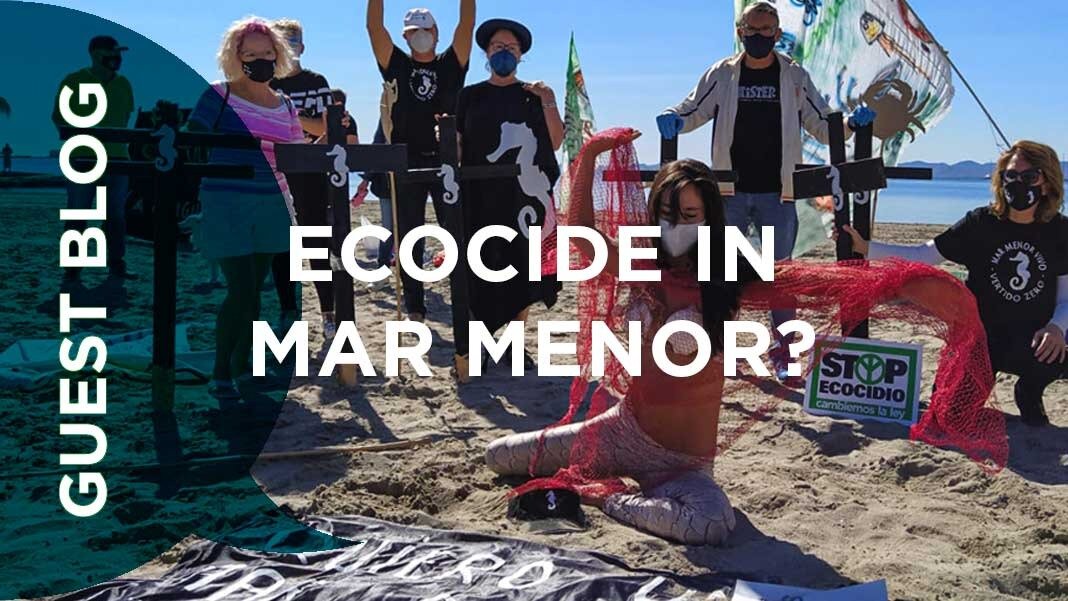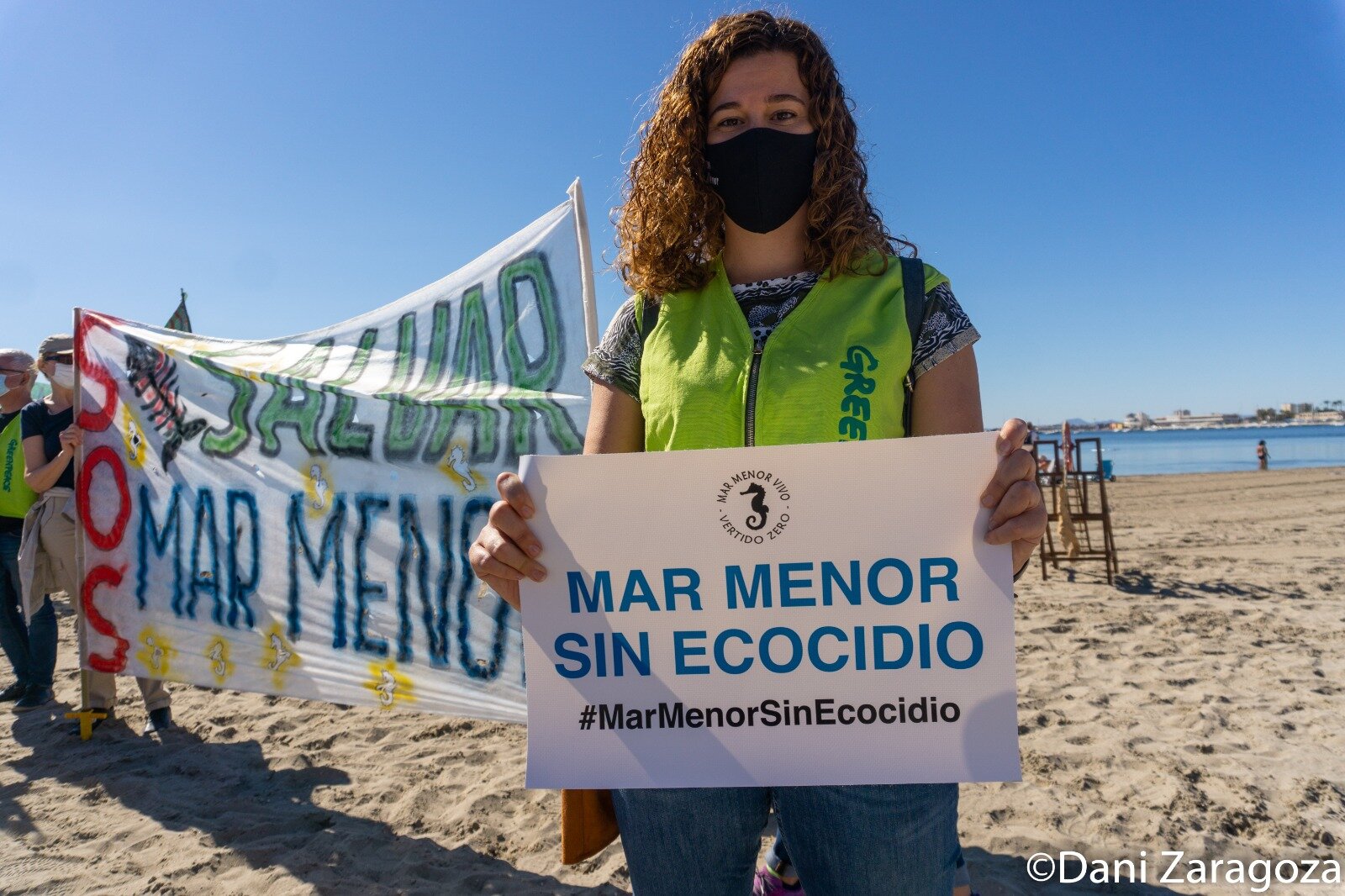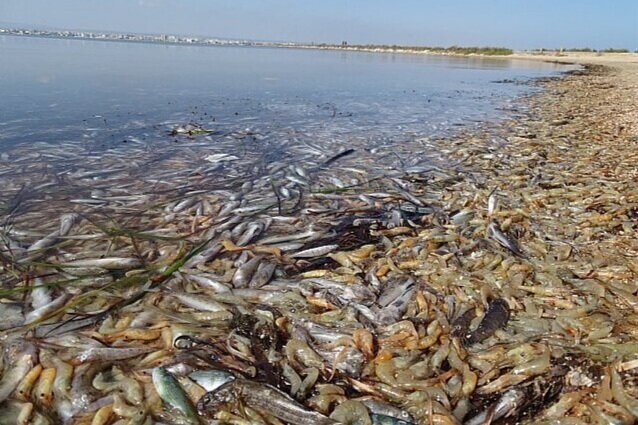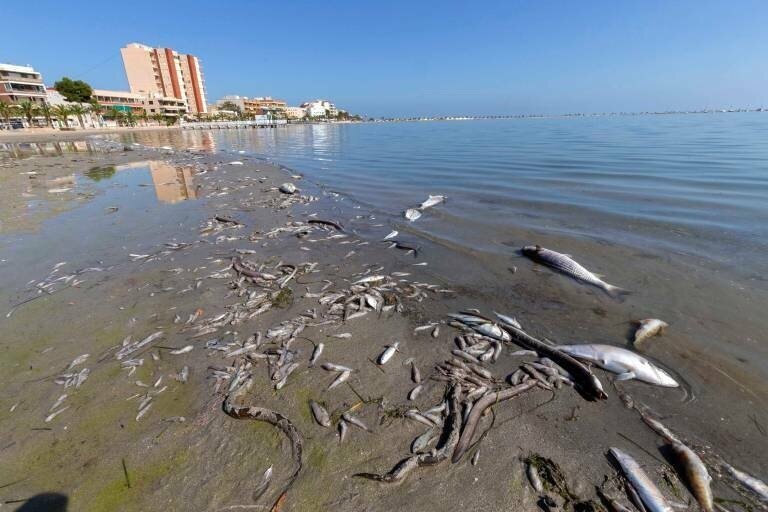Ecocide due to biomass burning?
This blog post was written by Johan Vollenbroek, Senior Advisor at Mobilisation for the Environment, and Maarten Visschers, Board member at Leefmilieu. They write about the destructive impacts caused by the clearcutting of forests, such as in the United States and the Baltic region, and the need to address current EU legislation considering wood (biomass) burning as a form of sustainable energy.
This guest blog is part of a series intended as a dedicated space for the many global movements/campaigns around the globe confronting ecosystem destruction to share their stories, narratives and perspectives.
This blog post was written by Johan Vollenbroek, Chairman at Mobilisation for the Environment, and Maarten Visschers, Board member at Leefmilieu. They write about the destructive impacts caused by the clearcutting of forests, such as in the United States and the Baltic region, and the need to address current EU legislation considering wood (biomass) burning as a form of sustainable energy.
Ecocide of forests as a direct consequence of biomass burning.
Between 2012 – 2020 the burning of wood pellets as an energy resource in Europe has doubled from 15 - 30 million tons per year. The method used for harvesting wood for pellets is through industrial clearcutting of forests. In reality, natural forests are also clearcut and are transformed into monocultures of trees. In the last 60 years, 20% of the natural forests in the Southeast of the US have been transformed into plantations: a disaster for biodiversity. In the Baltic States and Sweden, the same ecological catastrophe occurs: Ecocide due to biomass burning.
CO2 emissions of wood burning are higher than of coal burning
European climate legislation still considers wood burning (also called biomass burning) a form of sustainable energy. The scientists at the European Academies' Science Advisory Council (EASAC) say that nothing could be further from the truth. The CO2 emission of burning trees is 15% higher than that of burning coal and twice as high as gas. It takes between 5 - 10 decades for the planted trees to recapture the same amount of CO2 emission that was released during the process of burning. This additional CO2 emission exacerbates the climate crisis we are in. Within the next decade CO2 emissions must be reduced by at least 50% (compared to 1990) to meet the goals of the Paris Climate Agreement. Better maintenance of existing forests, more varied forests and planting of new, biodiverse forests are the best climate solutions and the best solutions to halt the loss of biodiversity. In 2018, this was emphasized by 800 scientists in a letter to the European Commission. At the beginning of 2021 more than 500 scientists and economists asked US President Biden, EU Commission President Von der Leyen, European Council President Charles Michel, Japanese Prime Minister Suga and South Korean President Moon in a letter to stop defining the burning of biomass as being carbon neutral in the European Renewable Energy Directive.
Image credits: Daniel Djamo
Industrial clearcutting is disastrous for biodiversity
Nevertheless, the use of wood pellets as biomass is still rising. The harvesting of wood for production of wooden products, paper fibre and wood pellets takes place through industrial clearcutting. Hectares of forest are continuously being destroyed. This contrasts with the far better solution of selective cutting in which only a few trees per hectare are cut. Industrial clearcutting is profitable for forestry companies. Hectares of forest, one after the other, can be cut down to produce pellets. However, the effects on the soil and biodiversity are catastrophic. The number of bird species in forests is plummeting and carbon stored in the soil is being released. This is ecocide.
Image credits: Clearcutting in Southeast of the US (Dogwood Alliance)
Southeast of the United States
In the Southeast of the United States, 16 million hectares of forest have been clear-cut in the period between 1950-2010. This is a stretch of land four times the size of the Netherlands. This means that 20% of the entire natural forests in this region has been clear-cut. The forests have been replaced by monotone tree plantations and biodiversity has entirely vanished in these areas.
However, clearcutting is still the method used to harvest wood in these protected forested wetlands, to produce wood pellets. The American wood pellet producer Enviva is the world's biggest supplier of wood pellets. Enviva is the owner of nine big wood pellet factories in the Southeast of the US and is expanding significantly. In 2019, over 15 million tonnes of wood pellets were exported from the US to Europe.
Figure 1: Conversion of natural forest to tree plantations from 1950-2010 (source: Dogwood Alliance, Stand4Forests Reports Series, 2020)
Figure 2: Production wood pellets in the Southeast of the US for biomass burning for sustainable energy in Europe (source: Dogwood Alliance).
Baltic states
In the Baltic states clearcutting is also used on a massive scale as a method of harvesting for the production of wood pellets. A recent report from nature organisation Estonian Fund for Nature (ELF) describes the disastrous ecological consequences of wood extraction in the forests in Estonia. The flying squirrel, capercaillie, black stork and hundreds of mosses, fungi and lichen, are all species threatened with extinction. 25% of forest birds have been lost in 20 years.
Image credits: Clearcut logging in Estonia (Estonian Fund for Nature)
The removal of dead wood from forests for biomass burning is fatal for insects and invertebrates. Dead and damaged trees usually form a nourishing microclimate and cause a new generation of trees to grow in such places. These microhabitats are inhabited by thousands of invertebrates that are an essential part of the food chain, supplying food for other invertebrates, amphibians, reptiles, birds and mammals.
Removal of biomass burning as a source of sustainable energy in the European Renewable Energy Directive (REDII)
The European Commission is currently evaluating the Renewable Energy Directive (REDII) and will publish an improved version at the end of June. The European Parliament will make a decision in September. Nature organisations insist that biomass burning should not be included as a source of sustainable energy. They call on the European Commission and the European Parliament to remove biomass burning as sustainable energy from the Directive.
Further sources:
Report by Biomass Magazine, 23/07/2020: EU wood pellet demand expected to increase in 2020
Press article, Politico, 03/26/2021: The ‘Green Energy’ That Might Be Ruining the Planet
Documentary (43min): Burned, are trees the new coal?
Booklet by Dogwood Alliance, 2019: Biomass Investigation, Global Markets for Biomass Energy are Devastating U.S. Forests
Report by the Southern Environmental Law Center, 2018: Burning Trees for Power
Article, Mongabay, 20/10/2017: Estonia’s trees: Valued resource or squandered second chance?
Deze gastblog maakt deel uit van een serie bedoeld als toegewezen plaats voor de talrijke mondiale bewegingen/campagnes tegen de verwoesting van ecosystemen om hun narratiefs en perspectieven te delen.
Onderstaande post is geschreven door Johan Vollenbroek, voorzitter bij Mobilisation for the Environment, en Maarten Visschers, bestuurslid bij Leefmilieu. De blog gaat over de destructieve impact van industriële kaalkap ten behoeve van biomassaverbranding zoals onder meer plaatsvindt in het Zuidwesten van de VS en de Baltische Staten. De noodzaak tot aanpassing van de huidige EU-regelgeving wordt benadrukt. In deze regelgeving wordt biomassaverbranding ten onrechte aangeduid als duurzame energiebron.
Ecocide van bossen als gevolg van biomassaverbranding
In de periode 2012 - 2020 is de verbranding van houtpellets voor energieopwekking in Europa verdubbeld van 15 naar 30 miljoen ton per jaar. De winning van hout voor houtpellets vindt plaats door industriële kaalkap van bossen. Daarbij worden in praktijk ook natuurlijke bossen gekapt en omgezet in houtakkers. Zo worden moerasbossen in het zuid-oosten van de VS opgeofferd voor houtpellets. In de laatste 60 jaar is 20% van het natuurlijk bos in het zuid-oosten van de VS omgezet in plantages. Desastreus voor de biodiversiteit. In de Baltische Staten en Zweden speelt eenzelfde ecologisch drama zich af. Ecocide als gevolg van biomassaverbranding.
CO2 uitstoot houtstook hoger dan steenkolen
De Europese klimaatwetgeving ziet houtstook (ook aangeduid met biomassaverbranding) nog steeds als een vorm van duurzame energie. Niets is minder waar zeggen wetenschappers van de European Academies' Science Advisory Council (EASAC). De uitstoot van CO2 bij houtstook is 15% hoger dan die van steenkool en tweemaal zo hoog als die van gas. Het duurt 50 tot 100 jaar voordat aangeplante bomen deze CO2 weer hebben opgenomen. Deze extra boost aan CO2-uitstoot kan het klimaat nu écht niet gebruiken. Binnen de komende 10 jaar moet de CO2 uitstoot met 50% (ten opzichte van 1990) zijn gereduceerd om de doelen van het Parijs Akkoord te halen. Beter beheer van de huidige bossen, gevarieerdere bossen en aanplant van bio diverse bossen zijn de beste klimaatoplossingen. Ook om het verlies aan biodiversiteit een halt toe te roepen. In 2018 hebben 800 wetenschappers dit benadrukt in een brief aan de Europese Commissie. Begin 2021 hebben meer dan 500 wetenschappers en economen in een brief aan President Biden(VS), voorzitter van de Europese Commissie Von der Leyen, voorzitter van de Europese Raad Charles Michel, premier Suga (Japan) en President Moon (Zuid-Korea) verzocht biomassaverbranding niet op te nemen als klimaat neutraal in de Europese richtlijn hernieuwbare energie.
Beeldcredits: Daniel Djamo
Industriële kaalkap desastreus voor biodiversiteit
Kaalkap in het zuidoosten van de VS (foto Dogwood Alliance)
Ondanks bovenstaand stijgt het gebruik van houtpellets voor biomassaverbranding verder. De winning van hout voor de productie van houtproducten, papiervezel én houtpellets vindt plaats door een systeem van industriële kaalkap. Daarbij worden hectaren bos tegelijkertijd gekapt. Dit in tegenstelling tot selectieve houtkap waarbij slechts enkele bomen per hectare wordt gekapt. Industriële kaalkap is voor bosbouwbedrijven financieel rendabel. Hectares bos kunnen achter elkaar worden gekapt voor houtpelletproductie. De effecten op de bodem en biodiversiteit zijn echter desastreus. Zo daalt het aantal bosvogels drastisch. Koolstof opgeslagen in de bodem komt bij de kap vrij. Het is een vorm van ecocide.
Het Zuidoosten van de Verenigde Staten
In de periode 1950-2010 is er door middel van industriële kaalkap 16 miljoen hectare natuurlijk bos verdwenen in het zuidoosten van de Verenigde Staten. Dat is een gebied van ongeveer vier maal de oppervlakte van Nederland en komt neer op 20% van de natuurlijke bossen in het zuidoosten van de VS. In de plaats zijn monotone boomplantages (‘houtakkers’) geplant. De gehele biodiversiteit in deze gebieden is verdwenen.
Nog steeds vindt er kaalkap in de beschermde moerasbossen in het zuidoosten van de VS voor houtpelletproductie plaats. De Amerikaanse houtpelletproducent Enviva is `s werelds grootste leverancier. Enviva is eigenaar van negen grote houtpelletfabrieken in het zuidoosten van de VS en wil dit aantal fors uitbreiden. In 2019 zijn ruim 15 miljoen ton houtpellets vanuit de VS geëxporteerd naar Europa.
Figuur 1. Omzetting van natuurlijk bos naar houtplantages in de periode 1950-2010 in het zuidoosten van de VS (bron: Dogwood Alliance, Stand4Forests Reports Series, 2020
Figuur 2. Productie houtpellets in Zuidoost- VS ten behoeve van biomassaverbranding voor ‘duurzame energie’ in Europa (bron: Dogwood Alliance).
Baltische Staten
Ook in de Baltische Staten vindt grootschalige houtwinning voor houtpelletproductie door middel van kaalkap plaats. Een recent rapport van de natuurorganisatie Estonian Fund for Nature (ELF) beschrijft de desastreuze ecologische gevolgen van de houtwinning voor de bossen in Estland. De vliegende eekhoorn, auerhoen, zwarte ooievaar en honderden mossen, schimmels en korstmos soorten worden in hun voortbestaan bedreigd.
Kaalkap in Estland (foto: Estonian Fund for Nature)
Ook het verwijderen van dood hout (resthout) uit bossen voor biomassaverbranding is desastreus voor insecten en overige ongewervelde dieren in het bos. Dode en beschadigde bomen vormen een microklimaat en zorgen ervoor dat een nieuwe generatie bomen op dergelijke plaatsen gaan groeien. Deze microhabitats worden bewoond door duizenden ongewervelde soorten. Deze ongewervelde dieren vormen op hun beurt een belangrijk onderdeel van de voedselketen van het bos en leveren voedsel voor andere ongewervelde dieren, amfibieën, reptielen, vogels en zoogdieren.
Biomassaverbranding schrappen uit de Europese richtlijn Hernieuwbare Energie
De Europese Commissie evalueert op dit moment de Richtlijn Hernieuwbare Energie (REDII) en publiceert eind juni een verbeterde versie. Het Europees Parlement zal in september een besluit nemen over deze verbeterde versie. Natuurorganisaties zijn van mening dat biomassaverbranding niet langer door Europa als duurzame energie mag worden gezien. Zij roepen de Europese Commissie en het Europees Parlement op om biomassaverbranding te verwijderen als bron van duurzame energie in de Richtlijn.
Verdere bronnen:
Verslag van Biomass Magazine, 23/07/2020: EU wood pellet demand expected to increase in 2020
Persartikel, Politico, 03/26/2021: The ‘Green Energy’ That Might Be Ruining the Planet
Documentaire (43min): Burned, are trees the new coal?
Boekje van Dogwood Alliance, 2019: Biomass Investigation, Global Markets for Biomass Energy are Devastating U.S. Forests
Verslag van de Southern Environmental Law Center, 2018: Burning Trees for Power
Artikel, Mongabay, 20/10/2017: Estonia’s trees: Valued resource or squandered second chance?
Milieuonderzoek, Wageningen Universiteit, 21/11/2019: Inzichten in duurzame export van houtpellets uit zuidoosten VS
Brief van Poolse wetenschappers, Biofuelwatch, 27/07/2020
Ecocide in Mar Menor?
This blog post was written by lawyer and environment consultant, Eduardo Salazar Ortuño. He writes about Mar Menor near Murcia in the south east of Spain, the largest hypersaline coastal lagoon in Europe. This unique ecosystem is widely believed to be a site of increasing ecocide, mainly due to mining waste and agrochemicals.
This guest blog is part of a series intended as a dedicated space for the many global movements/campaigns around the globe confronting ecosystem destruction to share their stories, narratives and perspectives.
This blog post was written by lawyer and environment consultant, Eduardo Salazar Ortuño. He writes about Mar Menor near Murcia in the south east of Spain, the largest hypersaline coastal lagoon in Europe. This unique ecosystem is widely believed to be a site of increasing ecocide, mainly due to mining waste and agrochemicals.
Image credits: Agencia EFE
The Mar Menor, located in the Region of Murcia, is the largest hypersaline coastal lagoon in Europe. It has a surface of 135 km2 and a maximum depth of 7 m. It is connected to the Mediterranean Sea through three channels or gullies. Due to these environmental peculiarities, there is a great ecological wealth, represented by bird fauna and emblematic and/or endangered marine species.
All of the above justifies that it has been granted various national, European or international protection figures as a wetland protected by the Ramsar Convention, Specially Protected Area of Interest for the Mediterranean in accordance with the Barcelona Convention, Natura 2000 Network Special Conservation Area and natural space partially protected as a Regional Park and Protected Landscape, in accordance with regional regulations of the Region of Murcia.
Image credits: Dani Zaragoza
Damaging effects of industrial activity
Image credits: Marcial Guillén (Agencia EFE
However, despite these figures and their natural, cultural, scenic, historical and economic values, the Mar Menor is in serious danger due to the impacts caused by human beings over the last decades, such as mining waste with the presence of heavy metals that reach the lagoon with the contribution of rainwater; the dredging and widening of the Estacio channel in the 70s, which produced physical-chemical changes with a significant drop in salinity and temperature; the chaotic urban development in its shores; and above all for the nutrients contained in the agrochemicals used in intensive and industrial agriculture that takes place in its environment and that are discharged directly or at the water table.
All these aggressions, tolerated by the Administrations whose purposes were to ensure the rational use of natural resources, have led the Mar Menor to such a state of deterioration and eutrophication, which in 2016 and 2017 produced an explosion of phytoplankton with the consequent darkening of the waters, which prevented the marine plants from being able to photosynthesize, causing the disappearance of 85% of their grasslands.
In October 2019 as a result of the contamination of its waters and heavy torrential rains, an episode of anoxia broke out that led to the death of three tons of fish and crustaceans.
Image credits: ANSE, Ecologistas en Acción
Local investigation and the criminalisation of ecocide
Since 2017, as a result of a previous investigation by the Public Prosecutor's Office in which the Nature Protection Service of the Civil Guard actively collaborated, an Investigating Court of Murcia has analyzed the behaviors of dozens of agricultural entrepreneurs in Campo de Cartagena - Cuenca slope to the Mar Menor and the adjacent aquifer -, as well as some state authorities of state and autonomous administrations.
While this judicial instruction is being developed, focused on the specific contamination by nitrates of certain actors and the tolerance of specific authorities of the Segura Hydrographic Confederation, critical voices are raised with the current configuration of ecological crimes in the Penal Code, to cover situations of such extreme and massive degradation of an ecosystem. As a result of this criticism to which the limitations of current ecological crimes lead by their dimension, penalties, prescription of behaviors and dependence on administrative regulations, the idea of considering the "crime of ECOCIDE" as engine of justice in the disaster that occurred in the Mar Menor arises.
Image credits: Julia Albadalejo, demonstration on June 9th, Murcia
The figure of ECOCIDE, as a concept that responds to the massive aggression to an ecosystem and, in this case, thanks to extreme negligence and deliberate clandestine and constant dumping, is the one that best adapts to the serious damage that the Mar Menor has suffered during the last decades and would serve to give a response from the Law at the height of the circumstances. A partial conviction based on the crimes currently included in the Penal Code may not be exemplary and not serve to reverse the current trend that suffocates the salt lake. Therefore, the Mar Menor must become another symbol of the need to establish this new legal figure.
Likewise, the crime of ECOCIDE is the other side of the coin of the powerful initiative that has emerged to grant rights to the salt lake through a Popular Legislative Initiative. Both new institutions must serve so that, from an ecocentric perspective, it is possible to restore ecological balance to the Mar Menor.
Further sources:
Blog post from Stop Ecocidio Spain, 11/09/2020: Queremos un mar menor sin ecocidio
Press: Can Spain fix its worst ecological crisis by making a lagoon a legal person? The Guardian, 18/11/2020
Platform promoting the Legal Personality of the Mar Menor through a Popular Legislation Initiative (in Spanish): ILP Mar Menor
Video (in Spanish): 500.00 signatures to stop ecocide in Mar Menor and ILP call for signatures


















